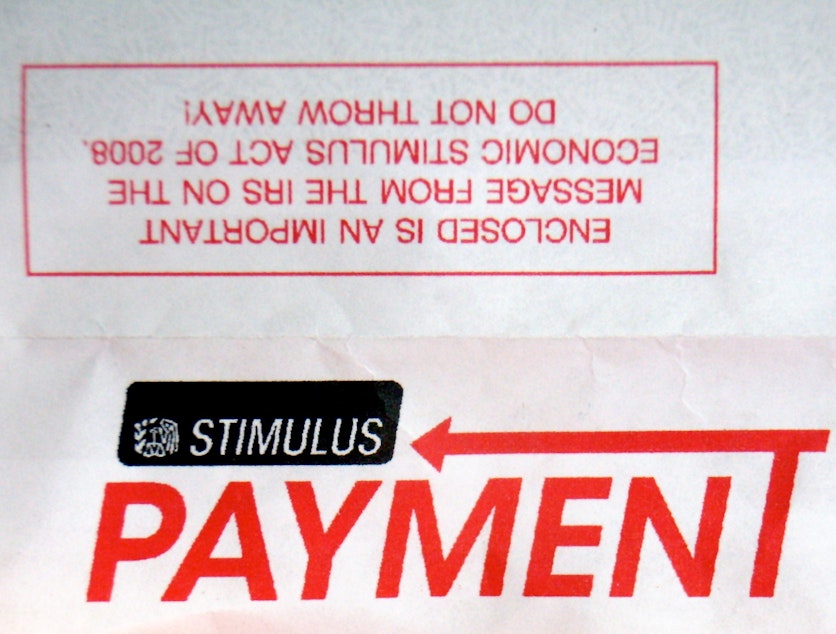Stimulus Friday: $3 billion in federal funds coming to Washington state

The news moves fast these days, especially when it comes to the coronavirus. Paige Browning is here with a Friday recap.
Congress has just passed a $2 trillion economic package for America in response to the coronavirus epidemic. President Trump signed it into law today after some fairly quick votes in the House and in the Senate. What does this mean now for us here in Washington state?
This huge bill has money for medical supplies, for small businesses, for housing, and childcare, and as we've heard, cash in hand for many Americans.
States like Washington are getting about $3 billion for local coronavirus relief funding. That $3 billion will go to medical supplies and hospitals. In Washington, we’ll also get $275 million to help stabilize colleges and keep serving students during this time.
Senator Patty Murray of Washington helped develop parts of this bill. She's celebrating it, but she has some hesitation:
“I'll be clear, this isn't a bill I would have written on my own. It's certainly not everything we are going to need to do, far from it, but these are very important steps and I’m glad the President is going to sign it into law today.”
And of course, he has signed that by now. Murray says more still needs to be done for families, and for people who are sick. For now, a record setting law today.
There could well be another relief package coming. So, when are everyday Americans going to be seeing this economic relief in hand? I'm thinking about folks who've been laid off and healthcare workers on the front lines.
It sounds like the soonest these deposits will go out is mid-April. That is the soonest. Senator Murray says it's really important you make sure that the federal government can deposit to you.
“If you already filed a tax return in 2018 or 2019, or receive Social Security benefits, you get the rebate automatically. But, for people who have not filed that tax reform, they need to go to irs.gov and they will be able to get the form online.”
People will get this if they earn less than $75,000 a year.
It's hard to believe, but today marks four weeks since this outbreak started here in Washington. That's when health officials identified one case of the virus in Everett and one in King County. Since then, of course, it's continued to spread. Where are we now?
We're still seeing dozens more people diagnosed each day in Washington. On this bell curve of the outbreak we're still on the left side of the curve.
We're not close to the peak yet. That peak is estimated to be three to four weeks away. This is according to modeling out of the University of Washington.
Our numbers are based on who has been tested, and we've seen problems in the testing capacity. Where do things stand now in regard to testing?
Short answer: conditions are getting better, but it's still true that if you have symptoms, but are otherwise healthy, you might be denied a test right now for coronavirus. The state wants to be able to test 7,000 samples a day. Right now in the state, we can process about 2,400.
So, difference in the numbers there.
Yes. A long ways to go.
How about equipment? Does Washington now have enough to handle the outbreak?
I’ll mentioned hospitals first. We have enough beds to fit patients right now, according to Governor Jay Inslee, but we will not have enough to handle the eventual surge in patients. The state and our congress members have pleaded with FEMA to put up hospitals here.
We're now hearing that the army is considering CenturyLink Field to be possibly a hospital.
And there's still, on another topic, a nationwide shortage of ventilators. We're seeing a Bothel company step up and team up with GM. They're going to build thousands of ventilators. This company, Ventec Life Systems, says they want to build 10,000 a month.
Anything else you want to leave us with?
There is an investigation underway into why the U.S. wasn't prepared. Senator Murray says Congress members asked the Trump administration if the U.S. had the testing capacity, and weeks ago, they said yes.
“I have asked HHS to do oversight of this and to look into what went wrong. Why? Because this will come back again in the fall. We need to know what went wrong this time so we get it right next time.”
So we're trying to handle it now and get ready for it to happen again.
Listen to the interview by clicking the play button above.






